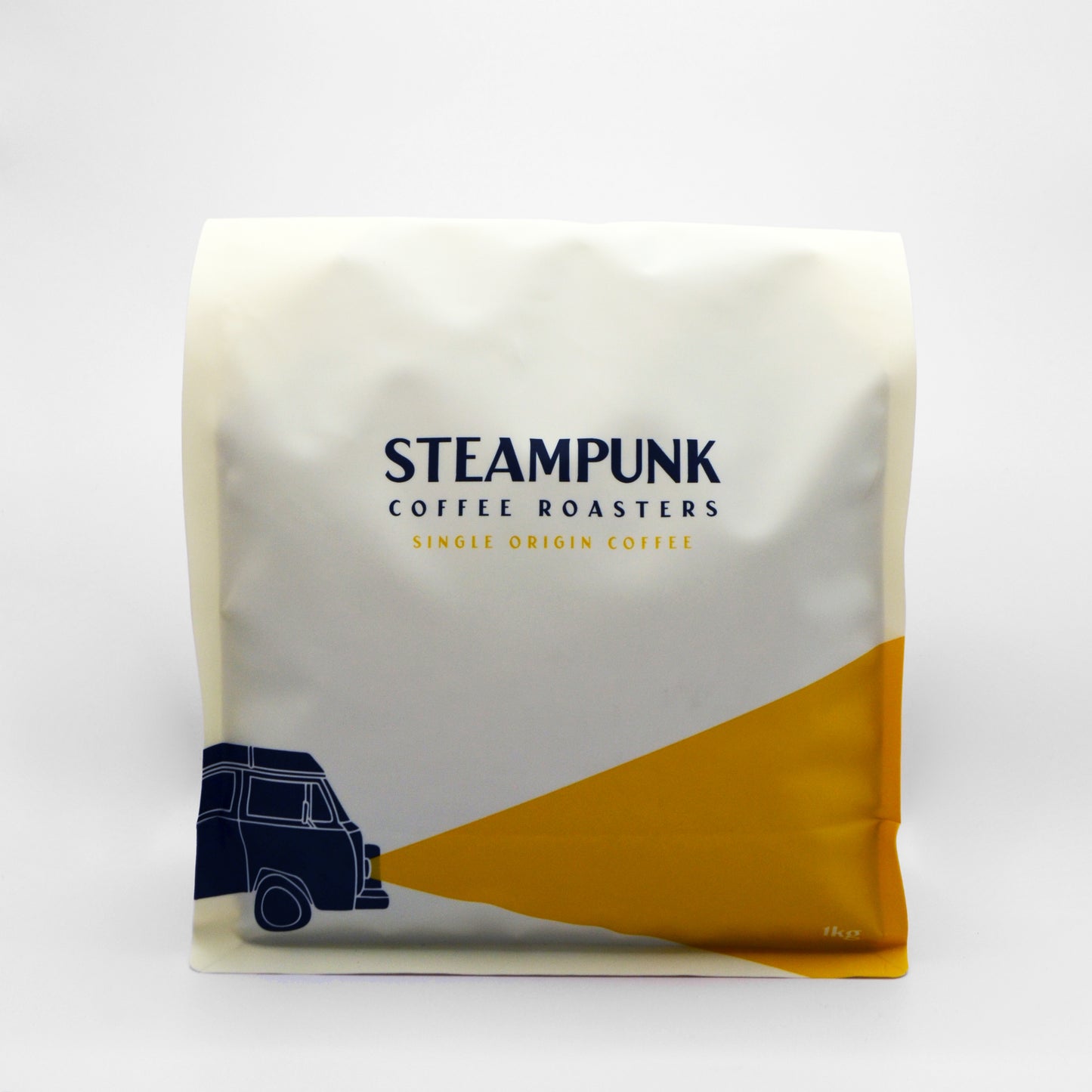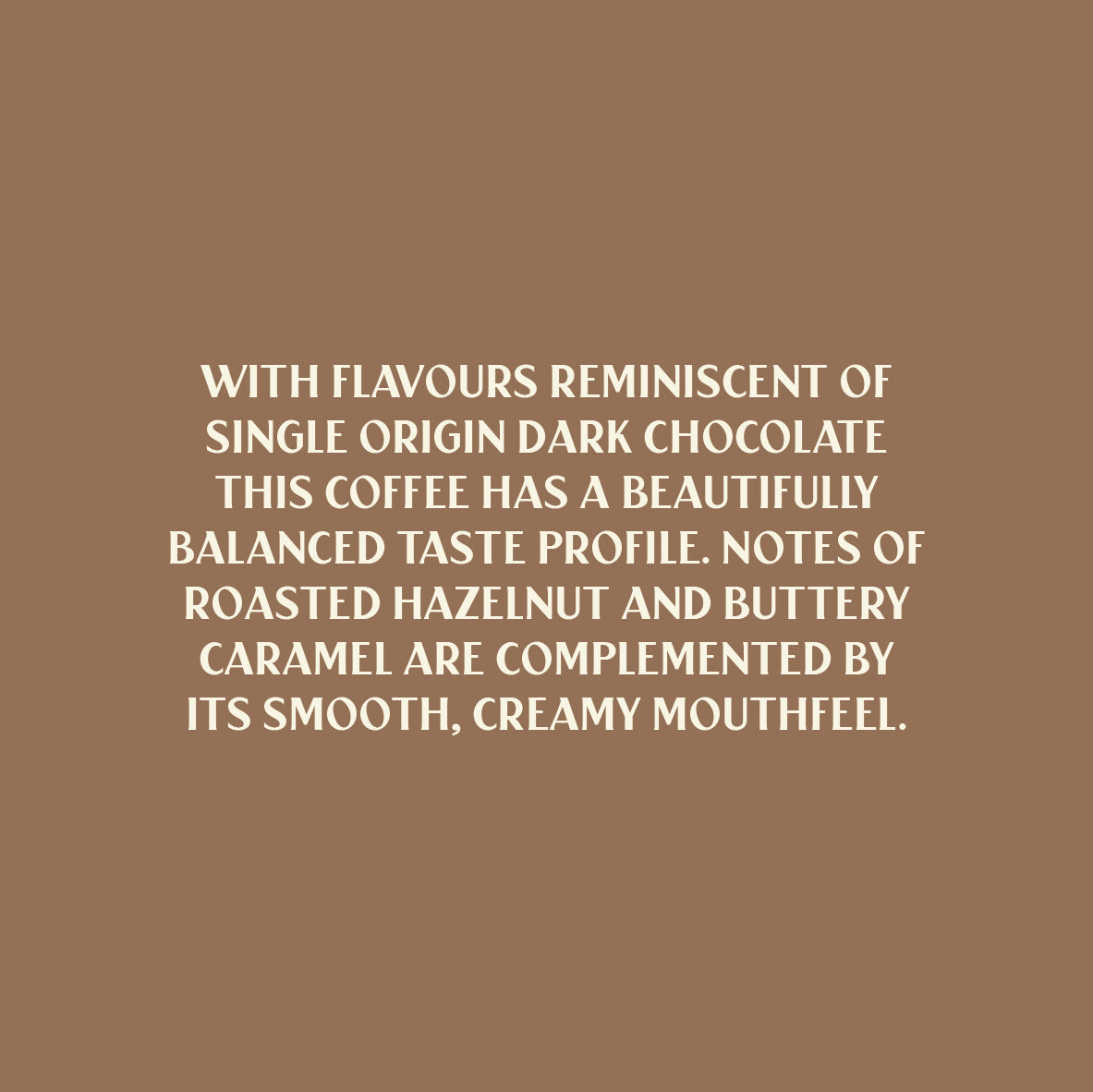BRAZIL AMANDA GALHERI
BRAZIL AMANDA GALHERI
A classic Brazilian coffee made for milky espresso drinks: nutty, chocolatey, full bodied and sweet.
Recommended Retail Price: £9/250g
We love to explore the full delicious spectrum of flavours specialty coffee has to offer, but we also know there’s a time and a place for a mug of something easy and familiar. This is a seasonal, single-origin fully traceable Brazil with an easy drinking profile: nutty, chocolatey, mellow, sweet and full bodied. It’ll be an easy dial-in and a crowd pleaser with or without milk.
Tasting Notes: With flavours reminiscent of single origin dark chocolate this coffee has a beautifully balanced taste profile. Notes of roasted hazelnut and buttery caramel are complemented by its smooth, creamy mouthfeel.
Producer: Amanda Galheri
Region: Cerrado
Altitude: 1,100 m.a.s.l.
Varietal: Catuaí
Processing: Natural
Our latest Brazilian coffee comes to us through two old friends with a new name. Bruna Costa and Emma Wallace, formerly of Kamba Coffee, have formed a partnership in their new venture Bossa Coffee. They’re importing Brazilian coffees produced by Bruna’s family and a cadre of other Brazilian farmers with whom they’ve connected along the way. Rather than functioning as a traditional importer, Bossa acted as an agent for this coffee, brokering the sale between the cooperative, Expocacer, and Steampunk. So technically, this is our first ever direct trade coffee!
Amanda Galheri, who grew this coffee and is a member of Expocacer, is a third-generation coffee producer from Paraná who moved to Cerrado with her family after the historic frost in the late 1970s. Since childhood, she has been interested in coffee and was encouraged by her father, Mauro Galheri, to focus on quality as a way to add more value to their product. Over the past decade, Amanda has become increasingly involved in the production of specialty coffee lots. In 2023, she was recognized as one of three champions in Expocacer’s quality competition.
This lot of Catuai was selectively harvested so that only beans of uniform maturity and high enough sucrose content were processed. The first day after picking, the beans were spread on a patio and regularly turned. From the second day onward, they were arranged in pyramid-shaped rows and left to rest, encouraging light fermentation and a gradual increase in sugar levels. For the next 18 days, Galheri alternates between allowing the beans full sun exposure, which dries them out, and covering them with black canvas, which allows for more fermentation. Once the moisture content reached 11.8%, she packed this lot into big bags and left it to rest in the farm’s shed for 20 days before processing. Finally, the coffee was processed and graded at Expocacer’s mill to remove the dried skin, fruit and parchment, which is the inner protective layer around the beans.
Over the past 12 months all eyes in the coffee world have been on Brazil because unprecedented weather there has been causing volatility and surges in the commodity price of coffee, and therefore the prices paid for green coffee globally. Brazil is one of the world’s largest exporters of green coffee, so changes in export volumes have a big impact on global prices. Bruna recently published an excellent blog about the issue. It’s worth a read to get the perspective of a 15 year veteran of the coffee industry, who is also from a coffee producing family.
She concludes, “Paying prices entirely disconnected from the exchange would require significantly higher premiums. But realistically, are roasters ready to pay those prices and the consumers ready to receive them? The price spikes of 2022 and 2024 have shown me otherwise. It’s clear that pointing fingers or oversimplifying the issues won’t drive progress. Instead, we should focus on staying informed, embracing transparency, and sourcing insights from origin professionals who are closely tracking what’s happening on the ground.”
You can read more about what happened in Brazil and the price rises in our blog post, The Market in your Mug.
Share








